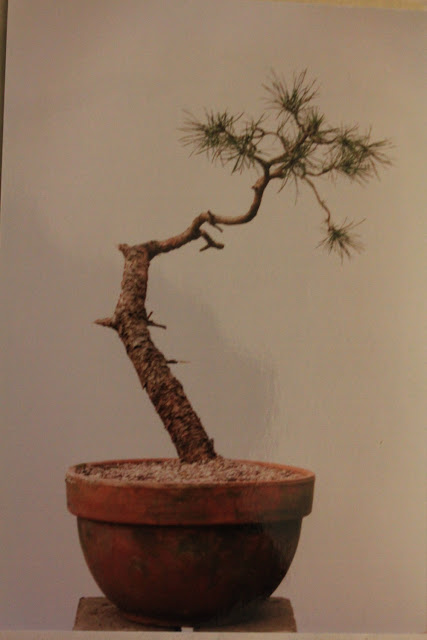This Scots Pine (Sylvesris) was collected in 2005 from a planted forest in Suffolk. Quite boring in shape but I was atracted by the bark quality on such a small Pine. The foliage was reduced on collection. After a period of a year or so, some work was done to introduce some movement in the top third of the tree. The remaining foliage was allowed to grow and was then pruned to build on side branching and back budding.
The Pine some 4 years down the road. Some wiring had been done in that time but only on the trunk line and first branch. The intention with this first branch was to create a dead branch with it. Dead branches or Jin, can be made more convincing if planned in the long term. By wiring and styling the branch, some very interesting character can be introduced, as well as side branching. Jins made without prior planning tend to be straight or slightly curved and very boring. You can also see a shari down the trunk where the tree was reduced after collecting. The callous has rolled over nicely now and gives a feeling of age too.

The Pine now needle pruned to let light into the interior and give better definition when styling. The whole tree was then fully wired so that every branch and candle could be placed exactly where I wanted them.



























